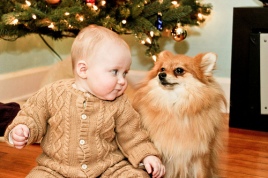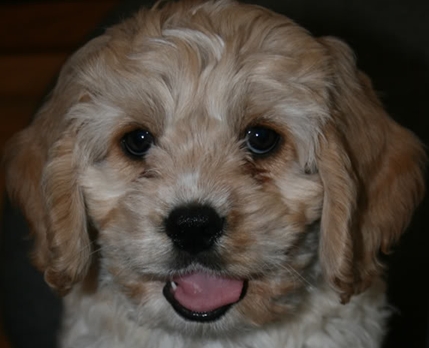
The dog's eyes are his most attractive feature. They are the "tie that binds" him to mankind. The expression of the normal dog is bright, intelligent, knowing. A dog's healthy eyes are clear, clean, lustrous; naturally and adequately moistened by tears. The moment the eyes appear at all different, there is the possibility that something is wrong, or an infection present.
A discharge from the eyes indicates an inflammation of the conjunctiva, the membrane lining the eyelids and, in modified form, covering the visible part of the eye.
Conjunctivitis
From personal experience, we all know that conjunctivitis leads to 'watering' of the eyes. Also, it often causes the eyelids or their edges to be reddened and swollen. Sometimes, it leads to a sticky and thicker discharge, and the eyes become tender and swollen, and you find the dog reluctant to keep the eyes open in a bright light.
A lot of factors cause conjunctivitis, some of which are local infections with viruses, mycoplasmas, bacteria, fungi; exposure to draughts (like when the dog looks out of the window of a moving car); exposure to dust, lime or smoke. In some dogs, a hyper-sensitivity to inhaled pollen or to other particles of foreign protein gives rise to atopic disease (hay fever) with
conjunctivitis. The latter can also be a symptom of some generalized illness such as canine distemper, and of canine herpes virus infection.
Severe inflammation and 'watering' of one eye may also occur if there is a blocked tear duct, or a grass seed or piece of grit present. As a result of pain and irritation, the dog may paw the face or rub it along the ground.
You can flush out this piece of grit by using a piece of cotton wool soaked in warm saline and held close to the eye so that a few drops fall on to its surface. You can also use an eye-dropper intended for human use, but be careful so as not to allow the end of the dropper come into violent contact with the eye if the dog jerks his head. If the grit has been moved by the liquid and becomes visible, it can often been removed by a piece of moistened cotton wool.
More difficult to remove is a grass seed or awn. Usually, a local anesthetic is indicated and then removal by a veterinary surgeon. But as a first-aid measure, you can apply a drop of castor or olive oil to reduce friction and discomfort.
Keratitis
This is an inflammation of the cornea (which could be referred to as window of the eye, which admits light through the pupil of the retina). Keratitis often follows conjunctivitis, especially if there is a severe infection present. Keratitis may also occur as a result of injury to the dog's eyes caused by a whip lash or a cat's claw; or to a thorn, a small piece of glass, or some irritant chemical. It may also be sequel to canine viral hepatitis.
Symptoms of keratitis include the profuse watering seen with
conjunctivitis and a tendency to keep the eye closed, but then there follows an opacity which at first may be only pin-head in size. This pin-head size opacity may be a clue to the presence of a thorn embedded in the eye. It must be removed by a veterinary surgeon under anesthesia.
Pannus
This is a complication of keratitis, and the term implies the appearance of very small blood vessel which grows out from the margins of the cornea, stopping at the edges of an ulcer - if one is present.
Ulceration
It is another sequel to keratitis and is always potentially dangerous, since penetration may occur, leading sometimes to a hernia of the iris, sometimes to infection of the anterior chamber and permanent blindness.
Trichiasis and Entropion
These refer to the turning in of the eyelashes and eyelids respectively, and they are sometimes the result of a chronic inflammation, but they are far more often inherited defects which appear during puppyhood. The eyelashes irritate the cornea and, if not treated, keratitis with opacity will follow. A minor surgical operation is needed to correct the defect and prevents further trouble.
Ectropion
This means the turning outward of the eyelids - a condition virtually normal in Bloodhounds and St. Bernards, but which usually needs correcting in order breeds by means of a minor operation.
Blue Eye
This is another quite usual condition of the dog's eye, and may set in with distemper, a lack of riboflavin, continual weeping or injury. The cornea changes from its original color to an opaque blue. This causes the dog to be temporarily blind in the affected eye, and unable to see. After several days, the blue gradually fades from the edges inward until only a tiny spot remains. Several months may pass before this scar disappears; possibly it will never disappear. Modern ointments are excellent in preventing infection of the cornea, but it is advisable to see your veterinary surgeon before the sight is permanently damaged.
Cataract
Cataract is a cloudy appearance of the lens and it may also form in the elderly or diabetic dog, impairing vision. Cataracts are often bilateral. An inherited predisposition to cataract is said to exist within some breed. There is no effective treatment for cataract other than surgical removal of the lens.
Other conditions of the dog's eyes may include:
Dislocation of the Lens
This is seen mainly in wire-haired Fox Terriers, Sealyhams, or terriers with similar ancestry, and this condition is often hereditary.
The eyeball becomes swollen and bulgy; but first the pupil is larger than normal, and the white of the eye shows some redness. If observed carefully, the lens may be seen to wobble, if it is still attached to some of its supporting fibers and not yet completely dislocated. A veterinary surgeon who specializes in ophthalmic work can carry out an operation for the removal of the dislocated lens.
Glaucoma
This is the swelling of the eyeball due to intra-ocular pressure. It may follow the lens dislocation mentioned above, and also atrophy of the retina.
Progressive Retinal Atrophy (P.R.A.)
The P.R.A. is an inherited condition which develops in certain breeds, in which the dog suffers from 'night blindness', being unable to see properly in conditions of poor light. The pupil dilates widely, even in daylight, and the dog appears to stare. The useful advice is not to breed from a dog or bitch with P.R.A.
Detachment of the Retina
This condition also has a hereditary basis. It is one feature of the so-called 'collie eye anomaly'. Bleeding within the eyeball and/or detachment of the retina may occur. If the latter is extensive, the dog is likely to be partially or totally blind.
Filarial Worms
This may infest the interior of the eye, and they can rarely be seen moving in the anterior chamber. There have been cases of filarial worms been removed surgically.
Blindness
Blindness in dogs could be either a symptom or a sequel to other conditions. A tumor or brain disease of some kind may cause blindness; while some poisons, such as metaldehyde, carbon monoxide, and quinine (to which the dog is very susceptible) cause temporary blindness. In old age, vision is apt to become impaired, and a few old dogs do go blind.
There are many abnormal eye conditions, some due to hereditary factor; some diet (like lack of Vitamin A); some to infections such as distemper (involving the retina and optic nerve), toxoplasmosis, tuberculosis, and various fungal infections.
It will be appreciated therefore, that eye conditions such as the ones mentioned above and more, should receive professional attention without delay. And to learn more about such professional tips that will help in the proper care of your dog's eyes, check out the best care for your dog's eyes
For more infomacio
Click Here!




